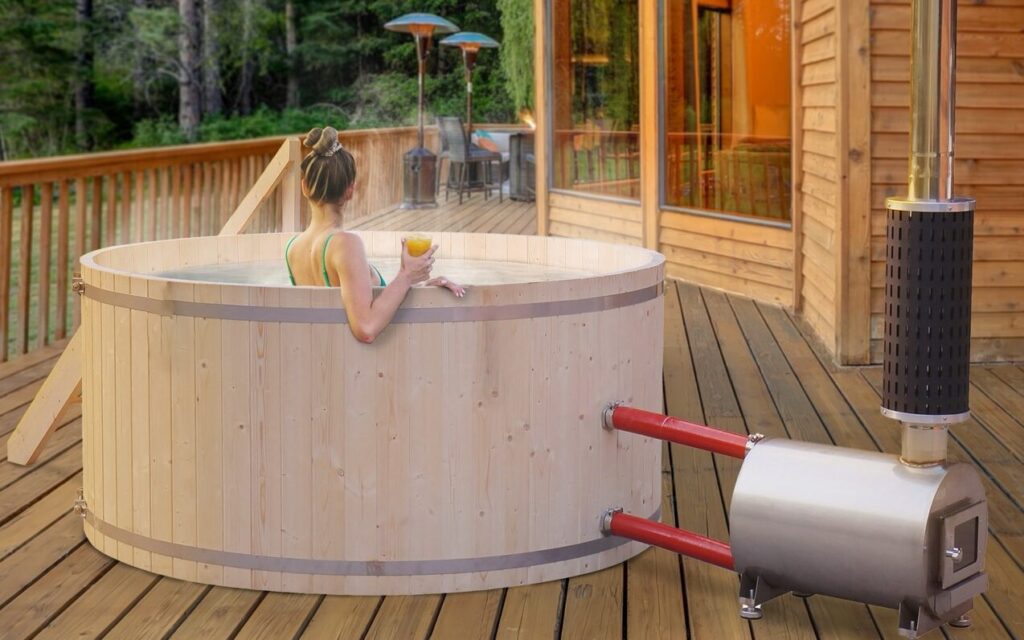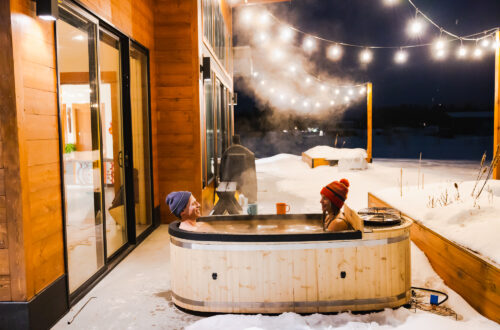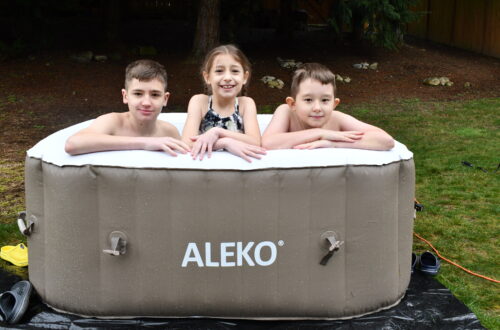Ah, the allure of a hot tub—steamy, soothing, and the epitome of relaxation. But before you dive headfirst into the bubbling bliss, there’s one question that tends to linger like the scent of chlorine on your skin: how much does it cost to run a hot tub? We’re here to break it down, from inflatable hot tubs to built-in ones, and help you soak in the knowledge you need.
The Price of Paradise: Running Costs
Inflatable Hot Tubs
Inflatable hot tubs are like the “pop-up” tents of the hot tub world—convenient, affordable, and easy to set up. But what about the running costs? Here’s what you need to know:
- Energy Efficiency: Most inflatable hot tubs are designed with energy efficiency in mind. They typically have fewer jets and a smaller water volume, which means they consume less electricity to heat the water. This can depend on whether you’re running a smaller tub like a 2 person hot tub or a larger 6 person hot tub.
- Electricity Cost: The main cost associated with inflatable hot tubs is the electricity needed to keep the water at your desired temperature. On average, you can expect to pay around $10 to $20 per month in electricity bills for an inflatable hot tub, depending on your usage and local electricity rates.
- Water Care: Don’t forget the cost of chemicals and water care products for your hot tub maintenance. You’ll need to balance the water chemistry and sanitize your tub regularly. This can add around $20 to $30 per month to your running costs.
- Heat Loss: Inflatable hot tubs might lose heat more quickly than their built-in counterparts due to their thinner walls. To combat this, consider using a well-fitted thermal blanket to minimize heat loss and reduce your energy bills.
Built-In Hot Tubs
Now, let’s talk about the big players—the built-in hot tubs that turn your backyard into a luxurious spa retreat.
- Energy Consumption: Built-in hot tubs are generally larger and equipped with more jets, which means they consume more electricity. Your monthly electricity bill can range from $30 to $50 or more, depending on the size of your hot tub and how often you use it.
- Insulation Matters: High-quality insulation can significantly impact your hot tub’s energy efficiency. Look for models with excellent insulation to keep those heating costs in check.
- Maintenance: Built-in hot tubs might require more maintenance, including regular filter replacements and potential repairs. Budget around $30 to $50 per month for maintenance expenses.
- Water Temperature: Larger hot tubs have more water to heat, so maintaining the desired temperature can be a bit costlier. Consider reducing the water temperature a few degrees to save on heating costs without sacrificing comfort.
Wood-Fired Hot Tubs: Harnessing Natural Heat

In contrast to the traditional built-in hot tubs that rely on electricity, wood-fired hot tubs offer a unique and eco-friendly alternative for hot tub enthusiasts. These rustic tubs not only provide a soothing soak but also bring a touch of nature into your backyard oasis.
- Energy Consumption: Wood-fired hot tubs are a great example of harnessing natural heat. Instead of relying on electric heaters, these hot tubs are heated by burning firewood or other solid fuels. This means that you won’t see a spike in your monthly electricity bill when indulging in a relaxing soak.
- Operating Costs: The operating costs of wood-fired hot tubs are relatively low compared to their electric counterparts. On average, the monthly cost for firewood can range from $20 to $40, depending on the frequency and duration of your hot tub sessions. This cost can also be essentially zero if you have access to free firewood in your area.
- Water Temperature: Controlling the water temperature in a wood-fired hot tub is straightforward. You have the advantage of regulating the heat source directly, allowing you to save on fuel when the tub is not in use. Adjust the fire to reach your desired temperature, and then simply let it cool naturally when you’re done.
Keeping Costs Down
Regardless of the type of hot tub you choose, there are several tips and tricks to help keep those running costs in check:
- Use a Timer: Set your hot tub to run during off-peak electricity hours to save on energy costs.
- Invest in a Cover: A high-quality hot tub cover acts as a thermal barrier, preventing heat loss and reducing energy consumption. It’s like putting a cozy blanket on your hot tub.
- Regular Maintenance: Keeping your hot tub well-maintained not only prolongs its lifespan but also ensures it operates efficiently.
- Energy-Efficient Models: When shopping for a hot tub, look for energy-efficient models with good insulation and modern heating technology.
- Salt Water Systems: Some hot tubs offer saltwater systems, which can be more cost-effective than traditional chemical treatments in the long run.
The Bottom Line
So, how much does it cost to run a hot tub? The answer varies depending on factors like the type of hot tub, its size, your usage, and local electricity rates. In general, inflatable hot tubs are more budget-friendly when it comes to running costs, while built-in hot tubs offer a luxurious experience but tend to be pricier to maintain.
Ultimately, the cost of running a hot tub is a small price to pay for the relaxation and joy it brings. After all, a hot tub is not just an expense; it’s an investment in your well-being and a ticket to tranquility in your own backyard. So, go ahead, take the plunge, and let the warm waters of your hot tub wash away your worries.






